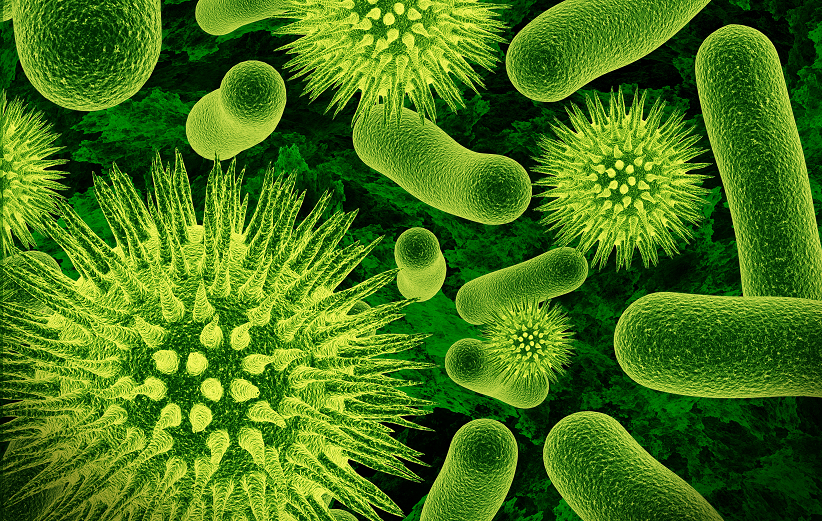The prevention and control of microbial contamination are critical for manufacturers of pharmaceuticals products to maintain quality and safety of medicines.
Some of the measures to prevent the microbial contamination of pharmaceutical products are given in the bullet list below.
Personnel
- Access to production areas must be controlled to ensure entry is restricted to trained personnel only.
- A high level of personnel hygiene must be observed.
- All workers whose activities may affect the quality of the productmust receive regular training, including hygiene instructions.
- Every person entering the manufacturing area should wear protective attire (over-garments, hair cover, beard or moustache cover, overshoes) appropriate to the operations to be carried out.
- Direct contact should be avoided between the operator’s hand and exposed products or any part of equipment that comes into contact with product.
Facility Design
- Aseptic process rooms must be maintained at higher differential air pressures than adjacent controlled areas.
- Air filtration and air change rates should be set to ensure that the defined clean room class is attained.
- Air flow over critical areas should be uni-directional (laminar flow) at a velocity sufficient to sweep particles away from filling/closing area.
- Ambient temperature and humidity should not be uncomfortably high.
- Depending upon the facility / product risk assessment results, Ventilated Cabinets, RABS (Restricted Access Barrier System), Isolators Systems etc. must be used to achieve an absolute or partial barrier to contain microorganisms at their point of use.
- Ultraviolet air locks and door barriers must be used to separate areas of unequal risk.
- All open-container processing should be performed inside isolator / RABS (sterile products).
- The air pressure of the changing room should be negative with regards to the manufacturing area corridor, but positive relative to external adjacent areas.
- Where possible ventilation dampers, filters and other services should be designed and positioned so that they are accessible from outside the manufacturing areas (service voids or service corridors) for maintenance purposes.
- Where appropriate, an impermeable barrier to prevent cross-contamination between two zones, such as closed systems, pumped or vacuum transfer of materials, should be used.
- HVAC air distribution components should be designed, installed and located to prevent contaminants generated within the room from being spread.
- All rooms and surfaces should be maintained and monitored for viable and non-viable particulates and the facility must be recertified on a semi-annual basis.
Important
Facility and equipment design cannot eliminate microbial contamination, but good risk assessment and consequent hygienic design can mitigate several of these risks.
For example:
- Uniform flow of man and material.
- Equipment designs with smooth surfaces of appropriate materials can facilitate effective cleaning
- Closed Material Transfer Systems.
Access to Areas
- Entry of unauthorized person should be prevented in area of production, packaging and QC.
- Personnel access must only be made via changing rooms.
- Materials access must be via specified routes – generally via air locks.
Building Requirements
- Interior surfaces, e.g. floors, walls, ceilings should be smooth, free from cracks and should permit easy and effective cleaning.
- Windows/viewing panels should be non-opening, flush with the wall panels and properly sealed to prevent collection of dust and microbial material.
- Pipe work, ventilation and light points should be designed to avoid creation of recesses which are difficult to clean.
- Sinks within the production areas should be made of stainless steel.
Cleaning & Disinfection
- Areas must be regularly cleaned and, where necessary, disinfected.
- A high level of cleansing and hygiene should be practiced in every aspect of the manufacture of drug product.
- Suitable grade of cleaning agents should be used to minimize health risks.
- Contact time, application, temperature, mechanical action and the chemistry of the cleaning agents should all be considered during the design of the cleaning process.
- Materials used for cleaning should not come in direct contact with the product.
- Validation of cleaning practices must be carried out to provide evidence that the process is effective in controlling microbial contamination.
Utilities
- Water used in the manufacture of pharmaceutical products shouldbe suitable for the intended use. Wherever possible it should be of pharmaceutical grade, microbiologically controlled and monitored.
- Steam used for cleaning and sanitization of production tools and equipment, supply for autoclaves and humidification must be clean and free of additives.
Remember, failure to maintain these controls can have serious consequences!

